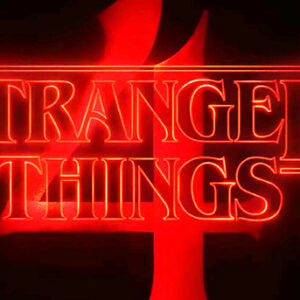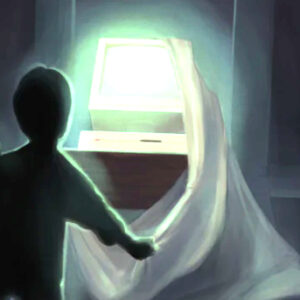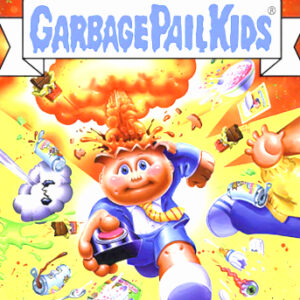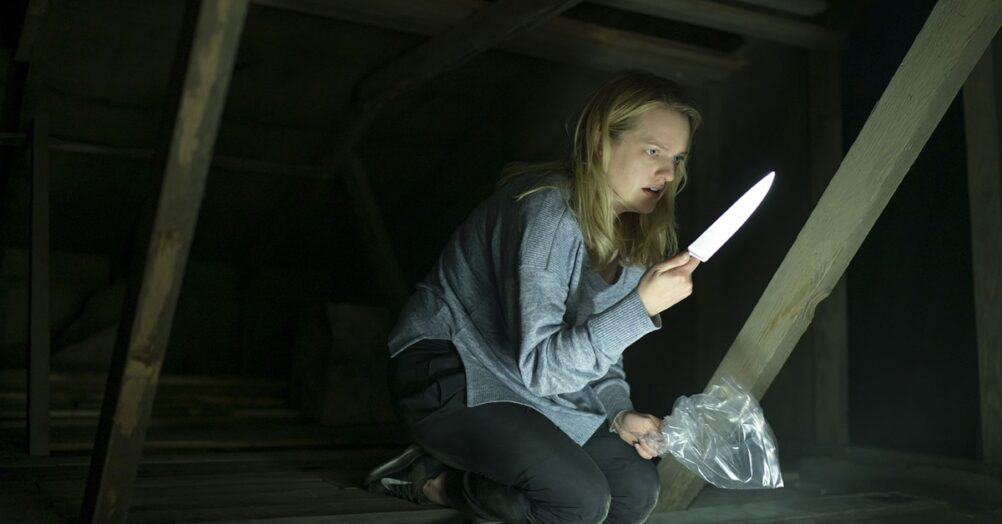Last Updated on August 5, 2021
Ink & Pixel is a source of pride and joy for me as a writer and as such, I'm always striving to take this column further for those who read and enjoy it. In an effort to widen the reach of our continuously growing fanbase, Ink & Pixel has been granted permission to broaden its horizons with the inclusion of films from the Horror, Sci-Fi, and Fantasy genres. I hope that you enjoy this bold new direction for the column. Additionally, if you yourself, or anyone you know, helped to make any of the amazing feature films found within this column, I would love to talk to you to further my knowledge. Please contact me at [email protected] so we can discuss it further.

Growing up, I was always a big fan of folk lore. Although I must admit, being from the United States, we didn't always have the best stories to share. Most of them were mere cautionary tales like that of Brer Rabbit, or the story of the Maryland Eavesdropper. Among the most popular, of course, were scores of ghost stories such as Bloody Mary, the Headless Horseman of Sleepy Hollow, and the Hitchhiker. Many of the stories were entertaining, there's no doubt about that, but most were supernatural rather than mystical in their nature. Thankfully, folk lore is a universal form of storytelling, and we're about to dive deep into Irish waters to swim with one of the most fascinating creatures to ever come from the imaginations of man – the selkie.

Before we double back to discuss those wondrous beasts, though, I should introduce the film to be explored in this week's article – Cartoon Saloon's SONG OF THE SEA. Featured as part of the Toronto International Film Festival held on September 6th of 2014, this beautiful animated feature saw its official theatrical release in France, Belgium, and Luxembourg on December 10th, 2014. Directed by Tomm Moore, with a story written by Will Collins, this is Cartoon Saloon's first feature-length animated film since their visual masterpiece THE SECRET OF KELLS (2009).

Together with the voice-acting talents of David Rawle, Brendan Gleeson, Fionnula Flanagan, Lisa Hannigan, Lucy O' Connell, Jon Kenny, Pat Shortt, Colm O' Snodaigh, Liam Hourican, and Kevin Swierszcz, SONG OF THE SEA borrows from Irish lore dating back to before the 18th century – a time when many fantastical tales existed only on the lips of storytellers, having yet to be committed to written form. Over the course of time, these mythologies have been altered from person to person, each manipulating the details so as to appeal to a new generation. That's the beauty of a story, really. There are always new and wonderful ways in which to tell them, not to mention audiences with fresh ears in which to listen.

SONG OF THE SEA tells of the adventure shared by two young siblings – brother Ben, and his mute sister, Saoirse – as they discover a fate-altering family secret that's been kept from them by their father. After a visit from the children's grandmother finds them exhausted, and sent to bed at an unusual hour, Saoirse wakes in the still of the night and feels the beckoning sea pulling her toward its salty depths. With a special coat, discovered secreted away in the depths of a closet, Saoirse then transforms into a selkie – a mythological seal creature – and takes to the ocean deep. Later, and much to the alarm of her family members, Saoirse is found washed up along the shore – safe, but she is only six-years-old after all.

Following Saorise's night among the moon and stars, the children's granny pitches a right fit, and promptly begins packing the kids belongings – with the intention of moving them away from the water and deep into the city. It isn't long after their arrival to their new urban surroundings that Ben and Saoirse hatch a plan to return to their lighthouse home. Alas, begin their grand homeward-bound adventure, Saoirse becomes gravely ill. It seems that her being away from the ocean has disrupted the balance between humankind and the very real myths that helped serve as the foundation of their homeland. With everything spiraling out of control, Ben finds himself engaged in a race against time to save the life of his sister as well as to correct the balance between our world and the Fae.

By now you might be asking yourself, what is a selkie, exactly? As a part of Irish, Scottish, and Faroese folklore, selkies (or selchidh in Gaelic) are mythological seal creatures. It's said that, on occasion, selkies are known to shed their skin in order to become human for a brief period of time. Furthermore, upon digging a bit deeper in the selkie myth, I found this interesting hypothesis on Orkneyjar.com pertaining to the origin of this mythical species:

“When the ancient tales were committed to paper, in the 18th and 19th centuries, some of the old folk claimed that the selkie-folk were, like fairies, fallen angels, condemned to live as animals until the Biblical Day of Judgement. Others insisted that the selkie-folk were once human beings who, for some grave misdemeanour, were doomed to assume the form of a seal and live out the rest of their days in the sea. The third possibility discussed by the Orcadian storytellers of yesteryear was that the selkie-folk were actually the souls of those who had drowned. One night each year these lost souls were permitted to leave the sea and return to their original human form.”

It's obvious that the selkie has been a creature of much debate over the centuries as the telling of their storied existence has passed from one group to another. The way in which SONG OF THE SEA chooses to represent the myth is by treating the selkie as an important element in the delicate balance between man and nature. Essentially, if you remove this majestic creature from the equation, one can expect catastrophic repercussions shortly thereafter. In other words, if you find yourself in the company of a selkie turned human, just let it enjoy itself – maybe offer to buy them a drink or a touristy t-shirt? I <3 Land, maybe?

To say that Cartoon Saloon created SONG OF THE SEA all by themselves would be madness, indeed. The film was in fact a joint effort between Saloon and several other production houses like Big Farm, Super Productions, Versus Productions, Magellan Films, and roughly 14 other studios. Just for a moment, consider the amount of communication and coordination that it would take to produce an animated film of this caliber, then remember that this collaborative effort included teams hailing from Ireland, Denmark, Belgium, Luxemburg, and France!

The inspiration for SONG OF THE SEA came about just before THE SECRET OF KELLS was set to go into full-on production mode. While vacationing on the beaches of Dingle, West Ireland, Moore and his toddler son Ben came upon a mass of dead seals that looked as if they had been discarded along the shoreline. Disturbed by the sight, Moore reported his findings to the land owner that leased him the holiday cottage. It was explained to him that finding seals washed up on their sands was, unfortunately, not uncommon. Curious, and even a bit sickened, Tomm pressed the woman for more information. She conveyed to him that, in recent times, fishermen had began killing seals out of frustration over the fish the animals were consuming around the docks. The landowner went on to clarify that this sort of horrific act would never have taken place several years ago, when the residents of the township had more respect for the local sea life, and the belief that seals could be selkies in disguise was more prevalent. Moore then began to conceive thoughts of what would later become the core of SONG OF THE SEA – a film about the last selkie.

In terms of animation, the film was made using a synthesis of hand-drawn cells combined with the use of a French computer art program called TV Paint. What's special about this program is that it allows the animators to perform traditional frame-by-frame animation without the need for scanning. As a result, the creators were able to present the film in a flawless, paper-drawn, 2D format – without much of the tedium that comes with animating standard pencil and ink cells.

Normally, this the part of the article where I summarize the film's box office totals, only, SONG OF THE SEA isn't exactly finished making its theatrical debut. Yes, the film has already been released on Blu-Ray, Digital, and DVD, yet it does not arrive on the big screen in Ireland until July 10th of this year. In North America, the film had earned a total of $841,122.00 in box-office receipts. I know that doesn't seem like a lot of money, but bear in mind that the film just hit the home market in March of this year, and will undoubtedly add to that number as time marches on.

Having just experienced SONG OF THE SEA for the first time this past week, I can tell you from my own perspective that it is a marvelous film. In my humble opinion, Cartoon Saloon is producing some of the most visually striking animation in the world, today. There's a deep and abiding sense of love and respect that comes with the subject matter of their films, and very few production houses making animated films today display the level of authenticity and wonderment that comes with a Cartoon Saloon production. I highly recommend that you gather those you love and partake in this imaginative and heart-felt film born of myth and magic. Until next time, Slán leat, folks!




















Follow the JOBLO MOVIE NETWORK
Follow us on YOUTUBE
Follow ARROW IN THE HEAD
Follow AITH on YOUTUBE